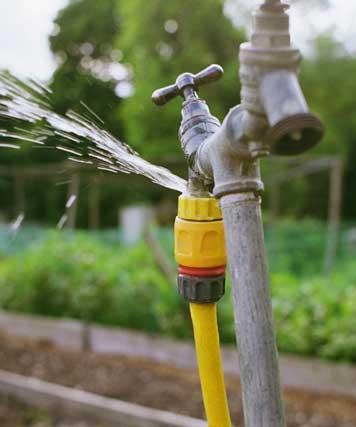Expose Hidden Water Line Leaks: Six Tested Techniques for Detecting
Expose Hidden Water Line Leaks: Six Tested Techniques for Detecting
Blog Article
How do you actually feel when it comes to Detecting hidden plumbing leaks?

Early discovery of dripping water lines can alleviate a prospective catastrophe. Aside from saving you money, it will certainly minimize the irritation and aggravation. The moment you find a leak, calling your plumber for repair work is the most effective service. Nonetheless, some tiny water leaks may not be visible. Here are some hacks that assist if you can not detect it with your naked eyes.
1. Examine the Water Meter
Every residence has a water meter. Checking it is a proven way that assists you uncover leaks. For beginners, shut off all the water sources. Ensure nobody will certainly flush, utilize the tap, shower, run the washing maker or dish washer. From there, go to the meter and also watch if it will change. Considering that no one is utilizing it, there need to be no activities. That suggests a fast-moving leak if it relocates. If you find no changes, wait an hour or 2 and also inspect back again. This indicates you may have a slow-moving leakage that could also be underground.
2. Check Water Consumption
Examine your water bills as well as track your water intake. As the one paying it, you ought to see if there are any inconsistencies. If you spot sudden changes, despite your usage being the same, it implies that you have leakages in your plumbing system. Bear in mind, your water bill should fall under the same range monthly. A sudden spike in your bill indicates a fast-moving leak.
Meanwhile, a consistent boost on a monthly basis, even with the very same habits, shows you have a slow leak that's also slowly escalating. Call a plumber to completely examine your home, particularly if you really feel a cozy area on your flooring with piping underneath.
3. Do a Food Coloring Test
When it comes to water intake, 30% comes from toilets. If the shade in some way infiltrates your bowl during that time without flushing, there's a leakage in between the storage tank and also bowl.
4. Asses Outside Lines
Don't neglect to inspect your outside water lines too. Needs to water permeate out of the connection, you have a loosened rubber gasket. One small leak can waste tons of water and also spike your water expense.
5. Inspect as well as Analyze the Circumstance
House owners should make it a routine to check under the sink counters as well as also inside closets for any bad odor or mold development. These two red flags indicate a leakage so prompt attention is required. Doing regular evaluations, even bi-annually, can save you from a major issue.
Check for discolorations and weakening as most home appliances and pipelines have a life span. If you presume leaking water lines in your plumbing system, do not wait for it to rise.
Early detection of leaking water lines can alleviate a possible catastrophe. Some tiny water leakages might not be noticeable. Inspecting it is a guaranteed method that helps you discover leakages. One small leak can waste tons of water and also surge your water bill.
If you suspect dripping water lines in your plumbing system, don't wait for it to rise.
WARNING SIGNS OF WATER LEAKAGE BEHIND THE WALL
PERSISTENT MUSTY ODORS
As water slowly drips from a leaky pipe inside the wall, flooring and sheetrock stay damp and develop an odor similar to wet cardboard. It generates a musty smell that can help you find hidden leaks.
MOLD IN UNUSUAL AREAS
Mold usually grows in wet areas like kitchens, baths and laundry rooms. If you spot the stuff on walls or baseboards in other rooms of the house, it’s a good indicator of undetected water leaks.
STAINS THAT GROW
When mold thrives around a leaky pipe, it sometimes takes hold on the inside surface of the affected wall. A growing stain on otherwise clean sheetrock is often your sign of a hidden plumbing problem.
PEELING OR BUBBLING WALLPAPER / PAINT
This clue is easy to miss in rooms that don’t get much use. When you see wallpaper separating along seams or paint bubbling or flaking off the wall, blame sheetrock that stays wet because of an undetected leak.
BUCKLED CEILINGS AND STAINED FLOORS
If ceilings or floors in bathrooms, kitchens or laundry areas develop structural problems, don’t rule out constant damp inside the walls. Wet sheetrock can affect adjacent framing, flooring and ceilings.
https://www.servicemasterbyzaba.com/blog/how-to-detect-water-leakage-in-walls/

I'm very taken with Leaking water lines and I really hope you appreciated the page. Enjoyed our write up? Please share it. Help someone else locate it. I value reading our article about Locating water leaks.
Reliable plumber? Dial! Report this page